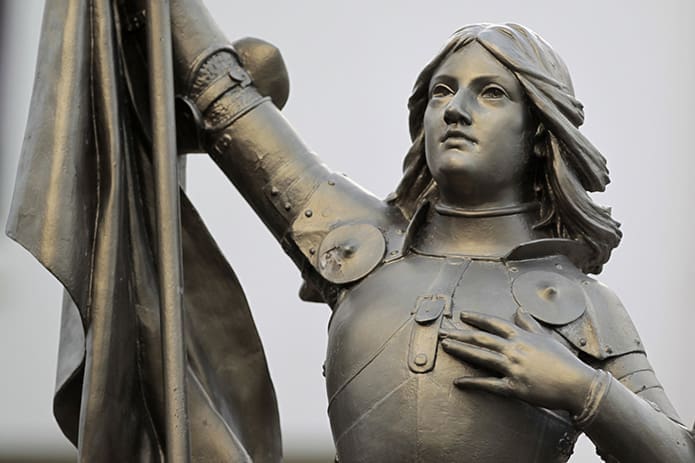 CNS photo/Charles Platiau, Reuters
CNS photo/Charles Platiau, ReutersAtlanta
Art can help sense ‘God’s hand in our own lives’
By NICHOLE GOLDEN, Staff Writer | Published October 24, 2013
ATLANTA—The Catholic Church has long been one of the “world’s great patrons of art,” said Dr. Nora M. Heimann, associate professor of art history and chair of the department of art at the Catholic University of America.
While art can inspire and delight, among its original purposes was “explaining complex theological” ideas,” said Heimann.
Some of the current course offerings at Catholic University in Washington, D.C., include “Art & Devotion,” “The Cult of Saints in Medieval Europe,” “Introduction to Early Christian Art and Archaeology,” “Michelangelo, Leonardo and Raphael,” as well as classes on works from the Byzantium empire.
“The appreciation for art has been immense,” said Heimann of Catholicism. “Pre Vatican II … art was vital in churches.”
Heimann recalled even helping create artistic banners at church as a young child. Catholics “as a people,” she said, understand or sense through art “God’s hand in our own lives.”
Heimann grew up going to the many art museums in the Washington, D.C., area with her family. She has studied art history at Harvard University, Williams College graduate school, the Université of Paris, and at the City University of New York. Heimann is a specialist in European and American modern and contemporary art history, and the relationship between art, religion and national identity.
For those wanting to delve into art history and religion, she suggested a few sources, including “The Lion Companion to Christian Art,” basic art history books, including the ones by Ernst Gombrich, and art history publications from the J. Paul Getty Trust (www.getty.edu). Art dictionaries can help anyone learn the language or terminology used in discussing art and symbols.
It was Heimann’s interest in Joan of Arc that took her to France. She is the author of “Joan of Arc: Her Image in France and America,” and “Joan of Arc in French Art and Culture: From Satire to Sanctity.” She noted you will find a statue or likeness of Joan of Arc in every square in Paris and many other French towns. How the saint is portrayed can be “radically different” and is “bendable” reflecting who is using her to support their cause.
If she had to pick favorites in religious art, Heimann said they would probably include medieval paintings of the birth of Christ. “They tend to be so exquisite,” she said. She also mentioned Eugene Delacroix’s painting, “Jacob Wrestling With the Angel.”
With the advent of photography, religious art is no longer as literal. Heimann used the example of no longer needing a painting of your grandmother, because you have a photograph to help you remember her instead.
“You’ll see modern art in traditional places now,” said Heimann. For instance the stained glass windows of Europe’s traditional churches, damaged in World War II, were replaced with modern depictions or designs.
While many religious artists were once trying to distinguish themselves from rival painters, that was not the case with the early iconographers, said Heimann.
Many religious icons were unsigned with the artists still unknown in most cases. Tradition holds, explained Heimann, that St. Luke painted the first icon of Mary and Jesus and all other icon artists were trying to emulate his work.
In addition to educating others, and writing, Heimann has curated several museum exhibits, including exhibitions at the Knights of Columbus Museum in New Haven, Conn., and the Corcoran Gallery of Art in Washington.
On Catholic University’s art department website, visitors can also learn more about art and communication as part of the mission of the Catholic Church.
Heimann says Pope John Paul II’s famous letter to artists was “useful and inspiring” in drawing attention to the role of artists.
From traditional representations to the architecture of modern American cathedrals, religious art forms are likely to remain to inspire and inform generations to come.
Heimann is also familiar with art being used in the realm of guided retreats.
“Meditating on a work of art is alive and well,” she said.